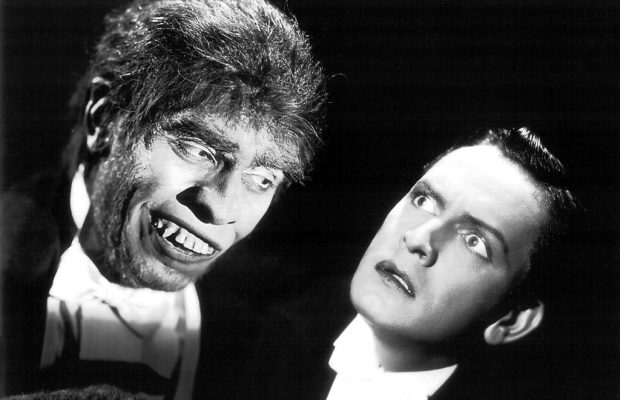Fragments of Jekyll and Hyde
By John Haskell - Mar 26, 2018

In the 1932 movie version of Doctor Jekyll and Mister Hyde, Dr. Jekyll is a well respected physician. We see him lecturing to a congregation of students and fellow-scientists, explaining his theories about human possibility, about the separation of what he calls “good” and “evil”. He believes he can separate a human being into disparate parts, and control that separation; and because he believes in the freedom to experiment, and to pursue those experiments wherever they lead, he begins to experiment on himself. He locks himself in his laboratory and creates a potion which, when he takes it, turns him into a beast. Mr. Hyde is the name he gives to that other aspect of who he is, and it’s while he’s being Hyde that he finds a young barmaid, takes her to a room and keeps her in that room as a kind of prisoner. We don’t see what he does to her, but it’s obvious from her expression that he abuses her and terrorizes her, and we don’t know if he feels guilty, but when he comes home, back to his laboratory, he’s able to drink an antidote that turns him back into Jekyll. And everything would be fine except he can’t stop taking the potion. He believes in his ability to control who he is, but he can’t control who he is; he keeps becoming Hyde, more and more frequently, as if, once he’s started, he can’t be anything else.
In another version of Dr. Jekyll and Mr. Hyde, made in 1941, Ingrid Bergman plays the barmaid that Mr. Hyde is keeping prisoner. She has wounds on her back from his, we assume, sexual advances, and when she has a chance she goes to Dr. Jekyll for some help and advice. She doesn’t recognize him, but he recognizes the marks on her back, and he realizes they’re his marks, and he determines then to put an end to Mister Hyde. He promises her that Hyde will be no more. In the film we see him, in his laboratory, placing a key — the special key used by Hyde to enter the laboratory — into a furnace, and we see the key turning into molten metal. Jekyll thinks that finally it’s over, that he’s a new man, a normal man, a regular, contented man, and at the moment he’s feeling content. His fiancee’s father has finally agreed to the marriage he’s been waiting for, and he’s walking through a park, whistling in the evening air, enjoying the air, and the birds in the air, and the cane in his hand as he twirls it. And then an expression crosses his face. And that’s when he starts turning into Hyde. The special effects are poor, but we see his face, almost frame by frame, as he transforms, against his will, into his other self. This time it’s happening on its own, without potion or provocation. And when it happens again, later, the thing he’s become goes wild. He goes on a killing spree, and when he’s chased back to his laboratory he takes the antidote and at first the policemen think they’ve made a mistake. They’re about to leave but again, Hyde appears, and at the end of the scene, after he’s destroyed his own laboratory, he’s shot and falls to the ground. Lying on his laboratory floor we see him in the middle of dying. And as he dies we see him turn, frame by frame, back into what he was.
